ABR − Constructed Wetland −Ponds- Drying beds

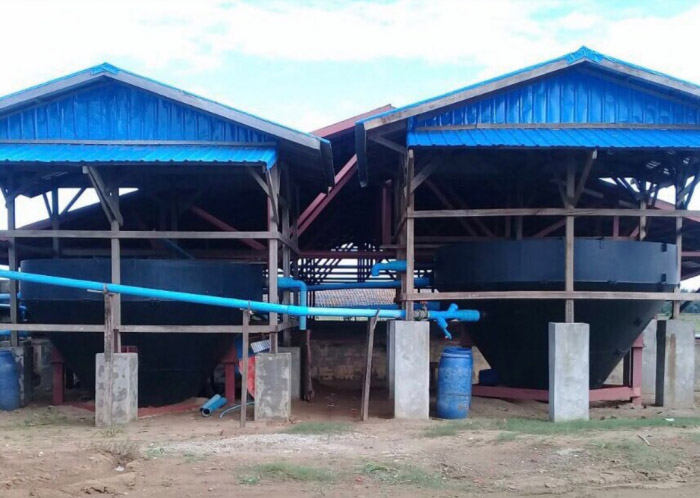
About 100 000 IDPs live in Sittwe camps. They exist since 2012, when a resurgence of tensions and violence between Muslims and Buddhists groups resulted in several hundreds of deaths and the displacement of more than 140,000 people.
The access to the camps are restricted by the government, and a Travel Authorization is needed to enter and exit the camps, for international staff as well as for Myanmar staff. The IDP camps are all located within the same restricted area, which includes also some existing villages from different ethnicities. It is a rural context, located on the coastal line at about 10 kilometers from the main city and on the coastal line. Hygiene promotion is carried out through Community Mobilization and behavioral change approach. Water supply is from borehole with hand pumps.
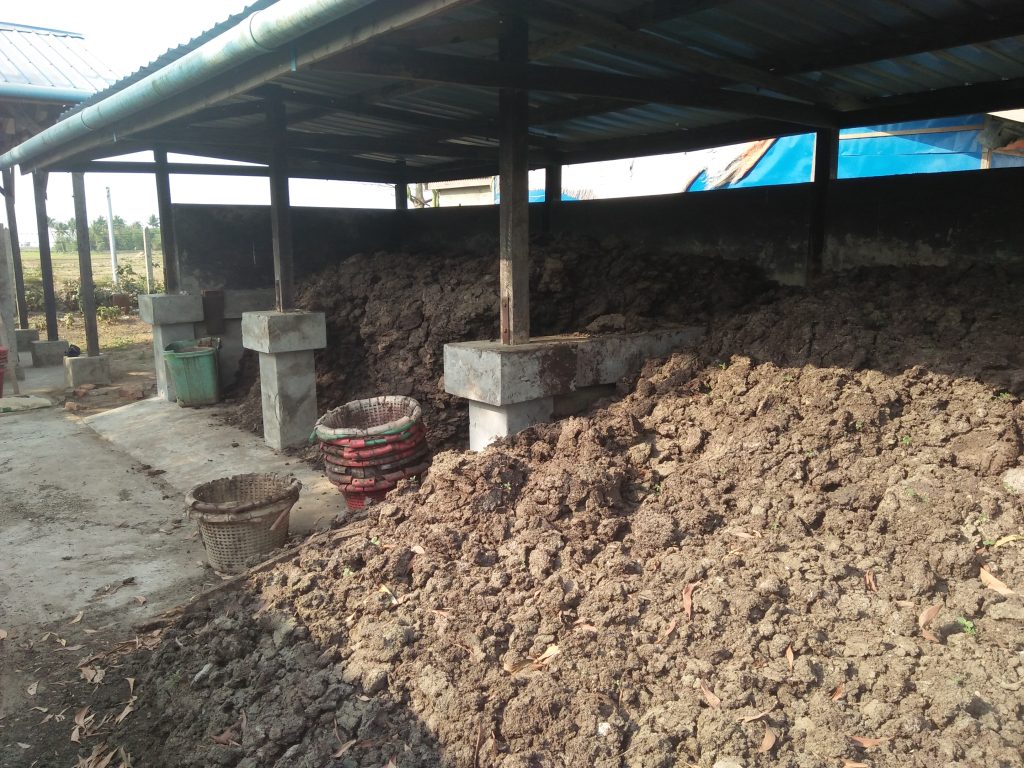
Solid waste management is ongoing as well as drainages maintenance and cleaning. Oxfam and SI are the main WaSH focal agencies in Sittwe camps, working in a Consortium. DRC is in the process of ending over the WASH service provision of two camps to Save the Children.
The dumping station is the first module of the Sludge Treatment Site (STS), where the tractors empty the barrel. It is composed of two emptying tanks where the barrel is emptied and its volume measured, with a screen to remove the solid waste, of a channel and of an outlet tank where the scum is trapped.
Two Hopper Bottom Tanks (HBT) are the second module of the STS. It provides mechanical primary treatment which consists mainly of sedimentation and flotation of inorganic material (biological degradation of settled solids occurs partly).
The Anaerobic Baffled Reactor (ABR) is the first module of the STS wastewater treatment line. It provides biological secondary treatment that is the biodegradation of organic material by the micro-organisms contained in the settled sludge.
The horizontal flow constructed wetlands are the second module of the STS wastewater treatment line. It consists of two large gravel and sand-filled basins (that are planted with wetland vegetation). As wastewater flows horizontally through the basin, the filter material filters out particles and microorganisms degrade the organics.
The maturation ponds are the third module of the STS wastewater treatment line. It consists of two large, man-made water bodies in which fecal sludge is treated by natural occurring processes and the influence of solar light, wind, microorganisms and algae.
Infiltration basins are the final module of the wastewater treatment line of the STS. The wastewater infiltrates into the ground through two infiltration basins that are filled alternatively.
The drying beds are the first module of the STS sludge treatment line. They are shallow unplanted filter beds with media consisting of sand and gravels. The drying process is based on drainage of the liquid through the sand and gravels to the bottom of the bed and evaporation of water from the surface of the sludge to the air.
The secondary constructed wetland is the second module of the sludge treatment line of the STS. It treats the leachate from the sludge drying beds.
The infiltration basins are the third module of the sludge treatment line of the STS. The wastewater infiltrates into the ground through two large basins filled with sand.
The dried sludge storage is the fourth module of the sludge treatment line of the STS. The sludge from the drying beds is stored to further dry.
The incinerator is the fifth module of the sludge treatment line of the STS. The dried sludge is incinerated and the ashes are given to farmers as amendment

The STS is situated in plains, next to the sea, with rivers running through the landscape and a high water table. In the rainy season, many areas are flooded, but not the treatment plant. The sludge has a strong smell, with no foam and is rather liquid. It contains many worms.
Parameter Inlet
Volume (m3) 35
TS (g/l) 14
COD (mg/l) 13500
NH4 (mg/l) 1000
NO3 (mg/l) 70
P (mg/l) 40
E.Coli (CFU/ 100 ml) 6 776 000
Over the years, due to the WASH agencies turnover, there were a variety of pit’ designs constructed in the camps. The most widespread design for containment pits is composed of one watertight pit of a cylinder shape of about 2.65 m3 for each latrine, followed by an infiltration pit of the same size for two latrines, with watertight walls but open at the bottom. Some latrines are each with a 0.6 m3 infiltration pits, in addition to the first pit. Others have two watertight pits of 2.65 m3 in series for each latrine, followed by infiltration trenches. Some latrines have only one pit with watertight walls and no bottom slab. Finally, a new design that is being implemented is similar to the first described, with the infiltration pit walls being constructed with porous concrete (without fines), allowing the water to infiltrate into the ground. Each latrine is designed for an average of 25 users, and each has one or two pits. Some latrines however receive more users because the neighboring latrines are not functioning. They are flush latrines and water is used for anal cleansing. There is a lot of solid waste in the pits. It is removed before desludging activities. The desludging is done with diaphragm and water pumps. The sludge is pumped out of the pit directly into a 1.5 m3 barrel that is located on a tractor. Some latrines are very close to the treatment plant (500m), while the furthest are at about 10km from the treatment plant. It takes up to 2h to travel from the latrines to the plant with the desludging tractors. Desludging is managed by NGOs. The workers are equipped with proper equipment to conduct their work. However, as of now, the desludging needs are not covered as many pits are overflowing. There is no local requirement for the treatment plant discharge value. SI refers to the WHO guidelines that indicate 1000 CFU/100ml for E.Coli concentration and 1egg/ml for Helminth eggs, for reuse in agriculture. There are no local safety requirements. SI follows standard operating procedures, using protection equipment and safety protocols, for the operation of the STS. See the Operator’s manual in annex. The initial design documents are not available. See in annex for the design calculations that were deducted afterwards, as well as from which reference documents the calculations were taken from. The initial production of sludge per person considered for the design is not known, but 0.44 kg/pers.d is considered the current production of sludge. The design was based on the DEWATS design developed by Borda: DEWATS (Decentralised Wastewater Treatment in Developing Countries), Ludwig Sasse 1998. Engineering skills and experience in faecal sludge treatment design are necessary to design a treatment plant similar to the STS. The water table is high during the rainy season (June to September), which leads to a decrease of the infiltration capacity of the ground. Sittwe has a tropical climate, with heavy rainfalls from June to September. The average annual temperature is 25.7 °C. Over the year, the average rainfall is 4664 mm. It is mostly sandy soil, with a good infiltration capacity during the dry season, when the water table is low.

Most modules are constructed with bricks and plaster, and tarpaulin is used when it is necessary to make them watertight. All construction materials are available locally. The hopper bottom tanks are in steel, they were produced in Yangon and assembled in the field. The roofs to protect from the rain and the sun are constructed either in wood or in steel. The brick walls have a lot of cracks due to the bricks and mortar poor quality. They are now five years old and should be rebuilt. Water is needed for construction activities. Access permission and legal authorization are needed for construction and installation. Small constructions, repairs and maintenance are carried out by SI staff or daily workers, while a contractor is used for bigger constructions or services that cannot be done through direct implementation. The initial construction of the plant took about 4 months, and was done at the end of 2013/ beginning of 2014. The land where the treatment plant is located, was identified in partnership with the local authorities in 2013. The land renters were compensated for the loss of agriculture up to 620,000 MMK (half the total amount going to each two land renters). The contract remains active for the complete period of working of the Sludge Treatment Site, and the payment covers the total losses with no further legal or financial obligations from Solidarités International. The total land of the STS is 2.5 acres. Basic skills are needed for the construction. Detailed designs are necessary and a strong oversight from Solidarités International skilled manager on faecal sludge treatment on the construction team needs to be ensured.
The main upgrade implemented was the replacement of the retention tank by Hopper Bottom tanks. It was not possible to desludge the retention tank as often as necessary, so it was replaced by Hopper bottom tanks that are more easily desludged.The overall capacity of the treatment plant needs to be increased. It is currently limited by the unplanted drying beds and the horizontal constructed wetlands capacity. The number of drying beds will be increased and the design of the constructed wetlands will be reviewed. The retention tank was decommissioned. The sludge inside was first emptied with a desludging submersible pump, and then manually with buckets. Workers were provided with protection equipment. The sludge was emptied in the drying beds, to be further treated. The tank was cleaned and it was not destroyed.
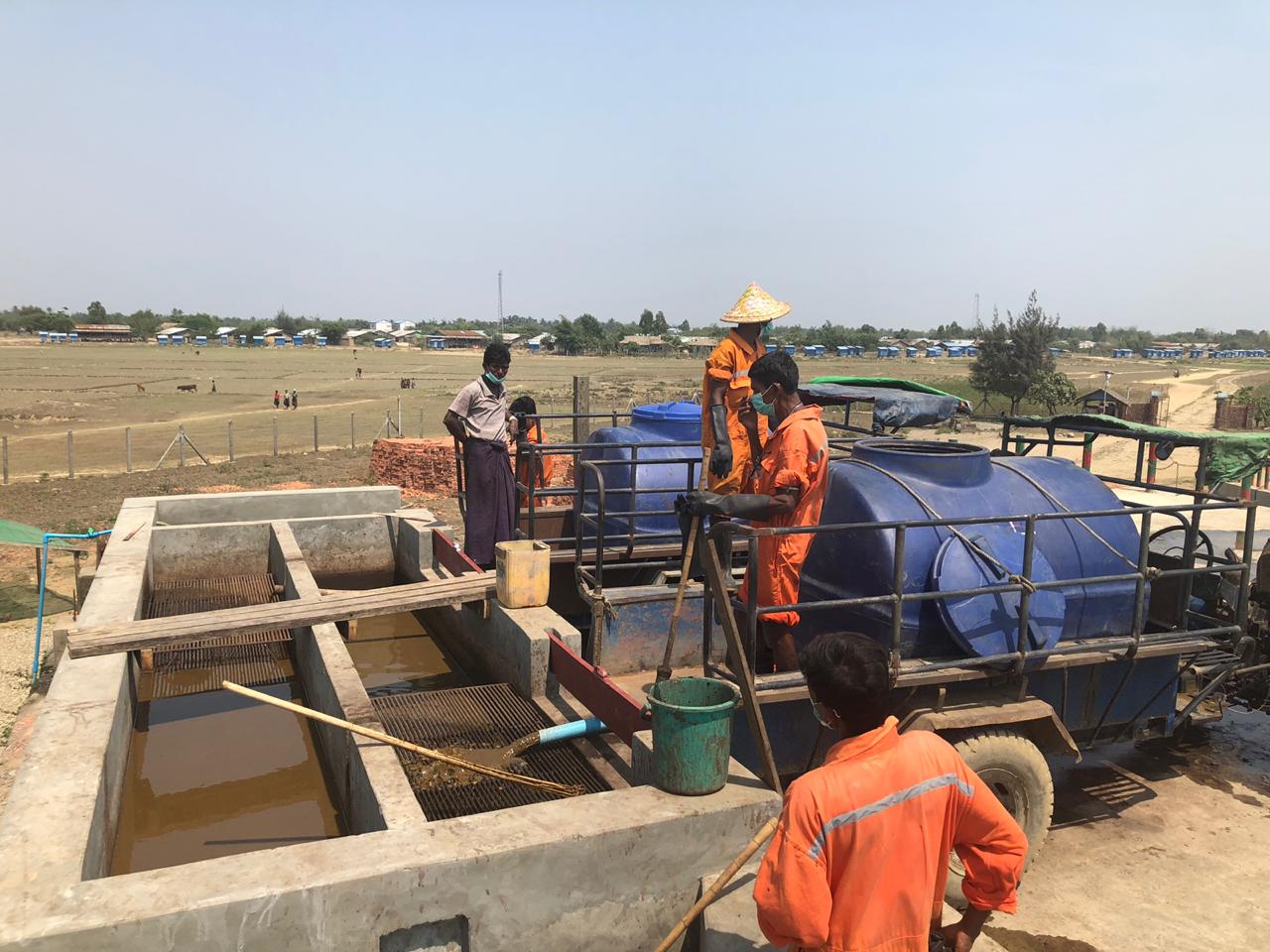
The operation and maintenance activities are included in the operator’s manual in annex. Nine non-skilled workers are operating the STS on a daily basis (emptying of the tractors, removing of the dry sludge from the unplanted drying beds, cleaning the STS, etc.). An officer is ensuring the activities follow the standard operating procedures, with basic knowledge of maintenance (see in annex its job description). He is also in charge of operating the laboratory, after following a specific training. An expert technician is necessary to set the proper operation of the plant. Then regular visits need to be planned to ensure that the operation is properly performed and that any issue related to it are solved. Water, brooms, shovels, buckets, spinning wheels, protection equipment, diaphragm pump, sludge judge are necessary for O&M activities. Specific material and equipment to run the laboratory are also necessary. All spare parts are available locally.
Data monitored:
Parameter Inlet Outlet liquid line Liquid outlet solid line Reduction
Volume (m3) 35
TS (g/l) 14
TSS (mg/l) 400 600 96%
COD (mg/l) 13500 1700 1000 85%
NH4 (mg/l) 1000 400 400 60%
NO3 (mg/l) 70 5 140 93%
P (mg/l) 40 40 5 76%
E.Coli (CFU/ 100 ml) 6 776 000 4000 7000 3 Log
See the STS Analyses document in annex for more detailed information.
Every day:
Tractor ID number
Tractor arrival time
Camp name
Organization in charge of desludging
Volume of sludge transported
Bed number in which the HBT was desludged
Level of sludge in the six beds
Once a week:
Sludge quantity in the first two chambers of the ABR
Once a month:
Sludge quantity in all chambers of the ABR
When necessary:
Bed number from which the dry sludge was removed
At which incinerator chamber the sludge is stored
The farmer’s information is recorded and kept at the STS when ashes are taken. See the Operator’s manual in annex for more information. During the rainy season, the drying beds take longer to dry (from three to five weeks approximately). There are many flies breeding on the maturation ponds. There are insects on the drying beds that bite the workers when they remove the dried sludge. The smoke from the incineration falls right into the compound of the treatment plant, affecting the workers. There are many goats entering the compound. The health and safety rules are included in the Operator’s manual in annex. Showers with continuous supply of water and soap are available and mandatory to use for the workers. The plant can be accessed with a motorized vehicle, as well as by foot. The site is protected by a fence, but goats still manage to enter it. Two security guards guard the site at night, and one during the day. The outlet from the main wastewater treatment line is infiltrated into the ground thanks to infiltration basins. However, during the rainy season, due to the additional flow going through the plant, the basins are not able to infiltrate all the water and it is overflowing in the neighboring field. The dried sludge removed from the drying beds are let for further drying in storage units, before being dry enough to be incinerated. The ashes from the incineration are collected and the farmers can come and collect them for free.
Some of the difficulties faced in the operation and maintenance are:
- The pipes are clogged with solid sludge, especially from the dumping station to the HBTs;
- The constructed wetlands are clogged faster than they should, with sludge surfacing;
Other difficulties faced and their solutions are presented in the Operator’s manual
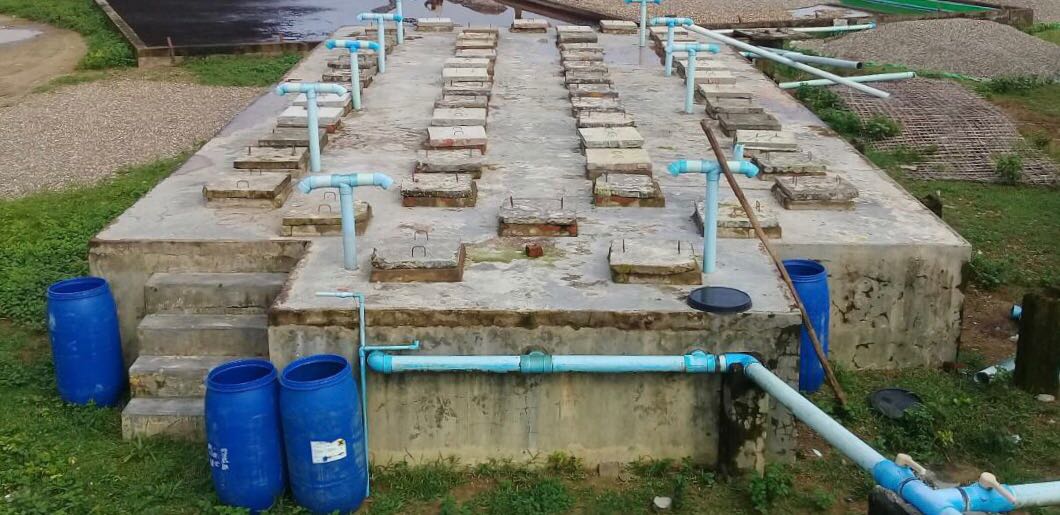
The design hypotheses were not available. Steel is stronger than wood for the roof structures, due to the exposure to monsoon coastal winds and the risk of cyclones. The concrete and bricks were damaged over time and numerous cracks appeared, possibly due to the bad quality of the sand (salty?). Hiring our own staff instead of working with contractors usually resulted in higher control of the quality of work. By providing and enforcing the use of protection equipment and providing training explaining the risks associated with faecal sludge to our staff. The authorities are currently not involved in the management of the plant and the financial balance of the plant is guaranteed by international donors. The spare parts are available locally, except for the laboratory, for which some consumables are shipped from France. The HR skills for daily operation can be found locally, and a partnership with Veolia Foundation ensures regular technical visits for improvements and to verify the proper operation of the plant. The design documents were not available, which resulted in problems in the operation. SI had technical support from the Veolia Foundation to fill this gap with design calculations. SI construction team provided the design drawings. The constructed wetlands were not properly designed and thus sludge was very quickly surfacing. They have been redesigned into 2 anaerobic ponds with an additional facultative pond, construction will start in 2020 or 2021. The operation of the first retention tank was not easy, so it had to be replaced with hopper bottom tanks. The pipes are regularly clogged by the sludge. Insects are biting the workers when they are removing the dry sludge from the drying beds. Basic and regular analyses of the sludge should be done from the beginning, as it is important to design the plant and ensure its proper operation. The solid content measurement (evaporation of the water and weight of the remaining solid) is easy to do and gives a good indication of each treatment step solids removal capacity.
- There is no need for inputs (e.g. energy or chemicals). The daily operation doesn’t need technical skills.
- The laboratory allows to improve the operation and to know the reduction of the treatment plant.
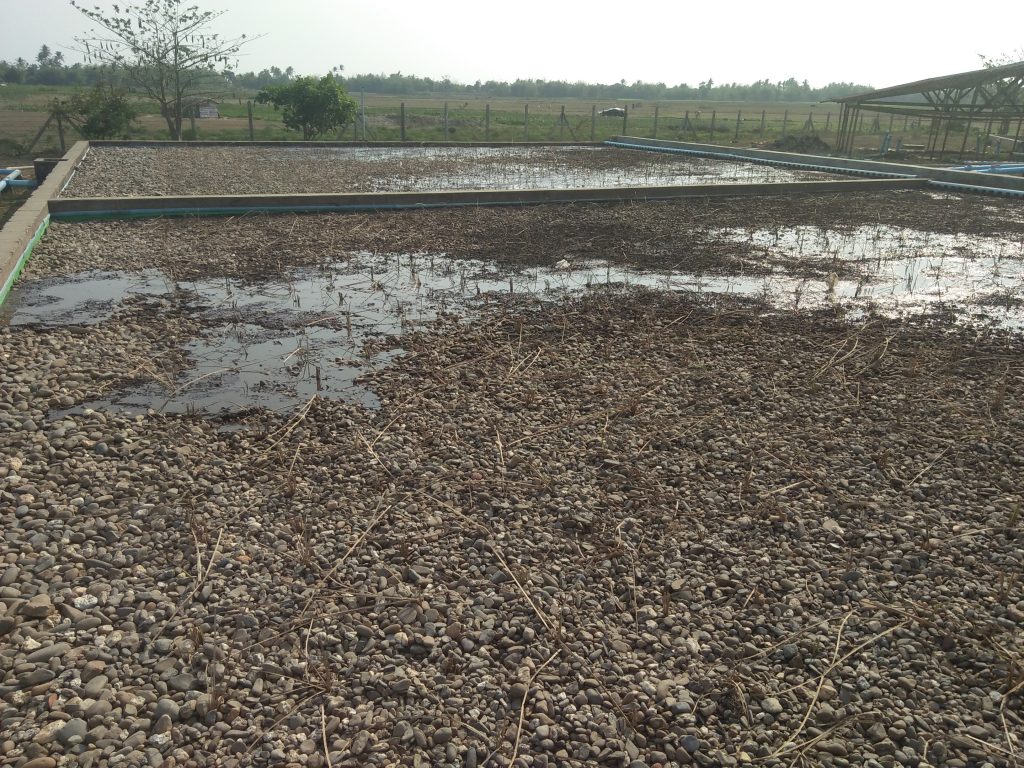

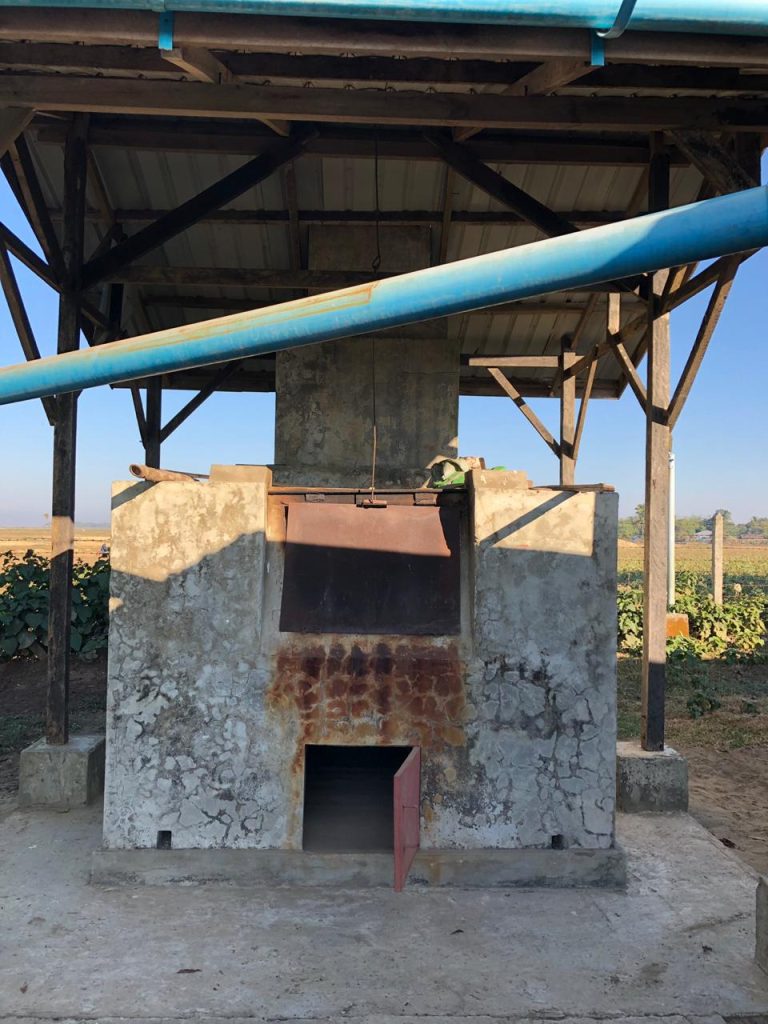
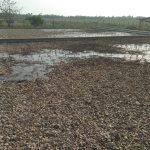
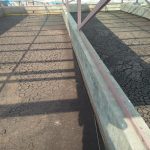
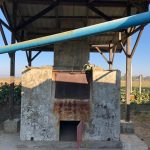
Project Details

Sittwe camp
Myanmar (Burma)



FSM specialist for operation and maintenance

Pathogen reduction
Solid/liquid separation
TSS and TDS reduction

Anaerobic filter
Constructed wetland
Incineration
Infiltration
Settling-thickening tank
Stabilization ponds
Unplanted drying beds
Vermi-composting

Lined pit latrines
Pit latrines affected by groundwater infiltraton
Public toilets

Sludge
Still have questions?
You could not find the information you were looking for? Please contact our helpdesk team of experts for direct and individual support.

